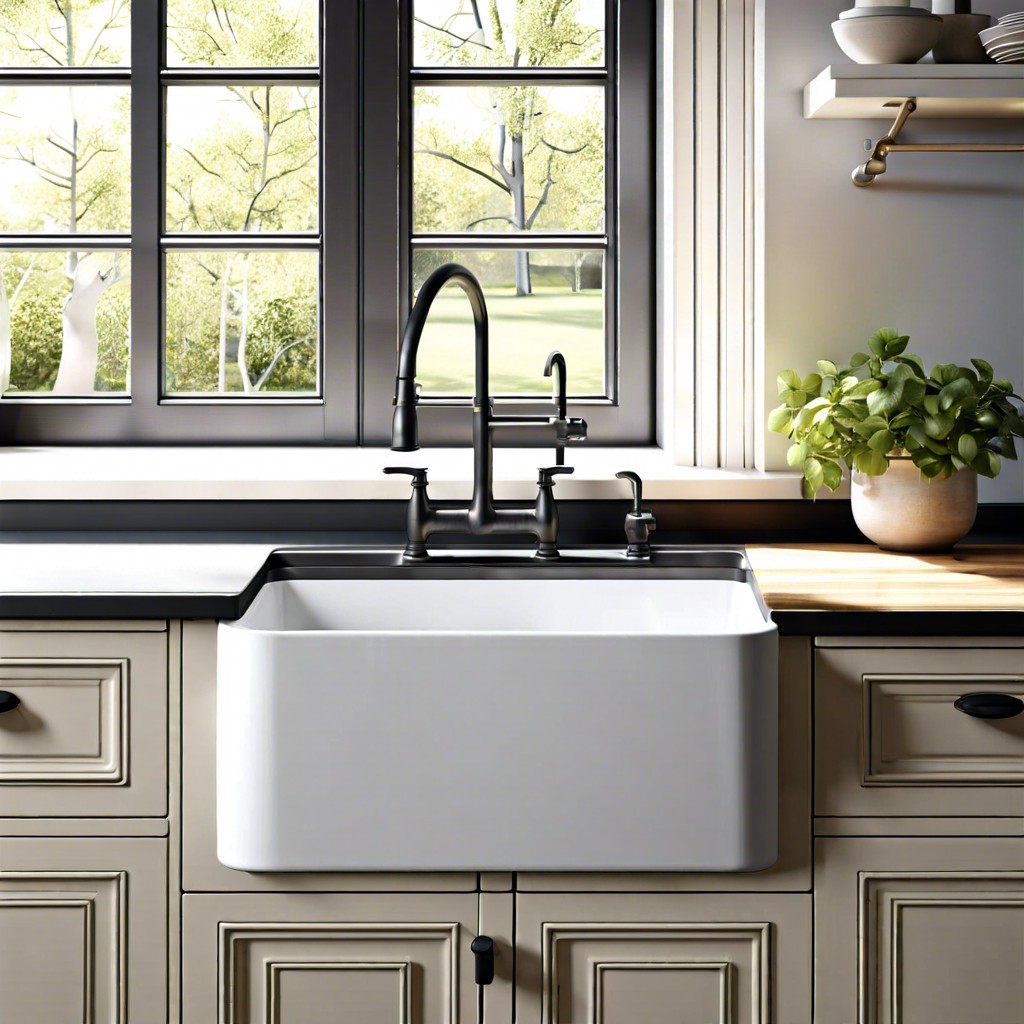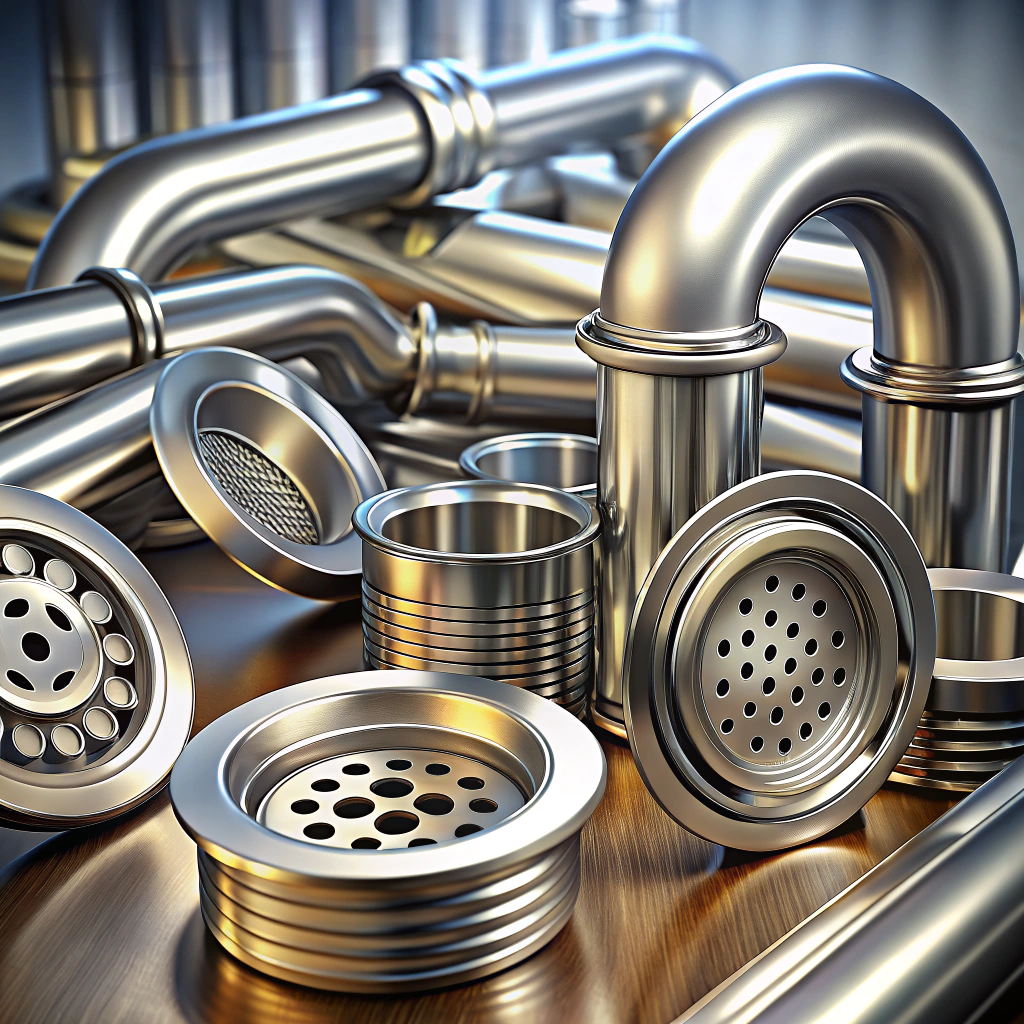Last updated on
Discover the best kitchen sink materials and learn which one suits your needs perfectly.
Key takeaways:
- Cast Iron: Durable, resistant to staining and scratching
- Composite: Sturdy, scratch and heat-resistant
- Copper: Adds rustic charm, naturally antimicrobial
- Balance pros and cons with lifestyle and needs
- Consider maintenance, budget, and installation requirements
What's Inside
Cast Iron

A timeless classic! Known for its incredible durability, cast iron sinks are coated in a thick layer of enamel, offering a glossy and smooth finish. These sinks can effortlessly handle daily kitchen tasks, all while looking stunning.
One major advantage is their resilience. Dropping heavy pots? Cast iron can take the hit. Plus, the enamel coating is highly resistant to staining and scratching, keeping your sink looking new for years.
However, they come with a couple of drawbacks. They are quite heavy, requiring additional support during installation. Also, that beautiful enamel? It can chip if you’re not careful, and repairing it isn’t always easy.
Overall, cast iron sinks provide a robust and elegant option for those willing to handle a bit of extra weight.
💖 Pros
💖 Pros:
It’s durable and can withstand heavy pots and pans without denting. Plus, it’s resistant to rust and heat, making it a reliable choice for busy kitchens. Surprisingly, despite its robust nature, it’s relatively lightweight, which makes installation a breeze.
Expect a smooth, non-porous surface that resists stains and scratches. It’s easy to clean, and many are UV-stable, so you won’t have to worry about discoloration over time. A solid, dependable option for those who blend style with functionality.
It offers natural antibacterial properties, which can be a huge plus for hygiene-conscious cooks. Plus, it’s known to develop a beautiful patina over time, adding a unique, elegant look to your kitchen. A blend of beauty and practicality.
It’s incredibly strong and can handle rigorous use without chipping or cracking. Ideal for those who need a sink that can take a beating and still look fantastic. A combination of resilience and charm.
The material is incredibly resistant to heat and scratches. Plus, it often comes in a variety of colors and patterns, making it easy to match your kitchen decor. Perfect for those who want a visually striking and highly functional sink.
Highly affordable and comes in various styles to suit different kitchen designs. It’s resistant to heat and stains, which can save you a lot of grief—and scrubbing time. Ideal for budget-conscious remodelers.
It brings a luxurious, upscale feel to your kitchen. Its natural, earthy look can make your space feel cozy and chic. Great for those looking to add a touch of elegance to their culinary hub.
🙅 Cons
Some of the upscale sinks come with a hefty price tag. For instance, composite and granite sinks can make the wallet feel pretty light. Your bank account might need a little love after that splurge.
Maintenance can also be a bit of a hassle. Copper sinks, though gorgeous, need regular polishing to stay shiny. It’s like having a high-maintenance friend who needs constant attention. If neglected, they can patina and turn greenish—unless you’re into the Statue of Liberty vibe.
Fragility is another downside. Fireclay sinks are prone to chipping and cracking if you’re not careful. Dropping a cast iron pan could result in a not-so-lovely blemish.
Noise? Yep, that too. Stainless steel sinks, especially the cheaper ones, can be pretty noisy. Ever dropped a fork in one? It sounds like a gong at a rock concert. Investing in a thicker model can help dampen the sound, though.
Lastly, there’s the weight. Cast iron and stone sinks are incredibly heavy. Installing them might require reinforcement and possibly a team of very strong friends or professionals. No one wants a sink-induced hernia, after all.
Composite (Quartz Dust and Acrylic Resin)
Combining the durability of natural stone with the flexibility of acrylic resin, composite sinks are both sturdy and stylish. Think of them as the superhero duo of the kitchen sink world.
- Pros:
- First up, strength. These sinks are highly resistant to scratches, stains, and chips, which means fewer cringe-worthy moments when you accidentally drop a pot.
They’re also heat-resistant. No more worrying about melting your sink if you happen to pour boiling water straight from the pasta pot.
- Cons:
- On the flip side, they can be on the pricier side. You won’t need a second mortgage, but it’s not exactly pocket change either.
They are heavy, so proper and secure installation is a must. Definitely not a DIY Saturday afternoon kind of job unless you’re secretly a professional wrestler or have Hulk-like friends.
Overall, these sinks bring a perfect balance of style and function, though might slightly lean on your budget and installation muscle.
💖 Pros
Durability is a top plus. Whether it’s cast iron, composite, or granite, these materials hold up against daily wear and tear like kitchen superheroes. Less chance of scratching, less headache for you.
Aesthetic appeal is another big one. Copper and fireclay sinks bring serious style points to your kitchen. Stainless steel fits perfectly in modern designs, while stone sinks scream rustic charm.
Maintenance ease cannot be ignored. Stainless steel and composite sinks are incredibly easy to clean. Just a wipe with a damp cloth, and you’re golden.
Finally, heat resistance. Cast iron and fireclay can take the heat, making them ideal for your sizzling stovetop scenarios.
🙅 Cons
Cons:
Cast iron, while incredibly durable, is heavy. Make sure your countertop can support the weight. Also, chipping the enamel means rusting issues down the line.
Composite sinks can be quite pricey. They also need regular cleaning to avoid stains.
Copper sinks may look stunning, but they require constant maintenance to keep that shiny finish. Plus, they can react with acidic substances.
Fireclay sinks? Beautiful but prone to cracking if handled roughly. They can also be quite heavy.
Granite might be a rock-solid choice, but it’s also a budget-buster. And if you drop something heavy on it, chips can happen.
Stainless steel can be noisy and easily scratched, leaving you with a sink that looks worn out over time.
Stone sinks, while luxurious, often need sealing to prevent stains and damage. Plus, they can be heavy and expensive.
When choosing, balance the pros and cons with your lifestyle and kitchen needs.
Copper
Let’s talk about a kitchen sink that ages like fine wine. Copper!
- Pros:
- Copper adds a warm, rustic charm to any kitchen. Over time, it develops a unique patina that adds character. It’s naturally antimicrobial, so it kicks bacteria to the curb without you lifting a finger. Plus, if you like custom designs, copper is malleable; you can get those artisan vibes right in your home.
- Cons:
- Patience is a virtue because copper requires consistent maintenance to keep its glow. It’s also a bit of a drama queen—acidic foods can cause tarnish marks. On the pricey side, copper sinks can hit your wallet harder than Black Friday sales.
Copper might just be the shiny star your kitchen needs if you’re up for a bit of tender loving care.




